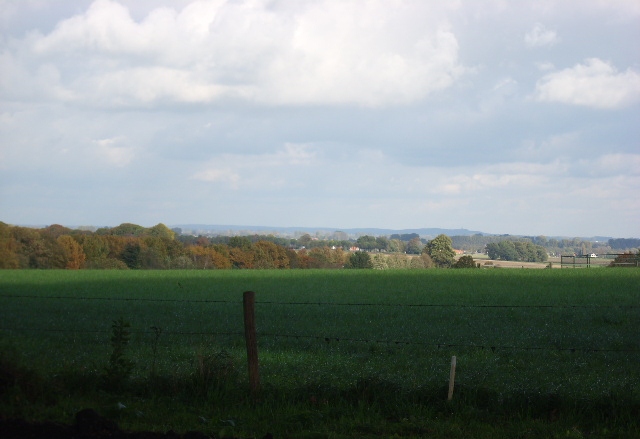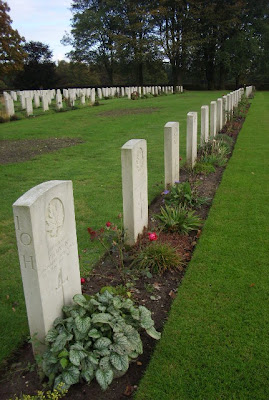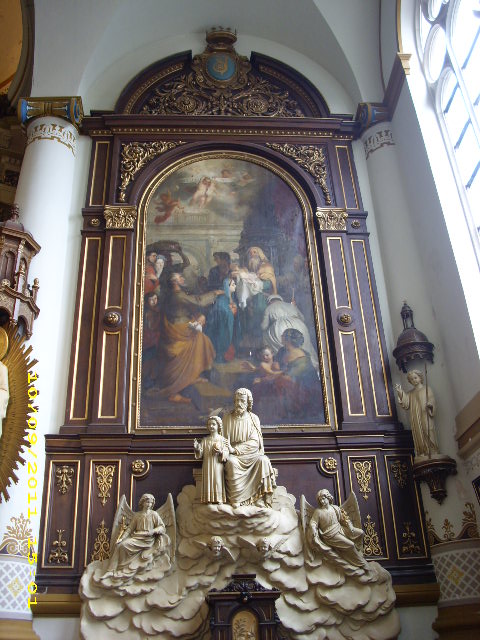On October 20th, my "Historical Culture in the Globalizing World" class took a field trip to the National Liberation Museum. It commemorates the events in 1944-1945 between D-day and the end of German occupation of the Netherlands. A bunch of us took the train over. It took about two hours to get there but it was fun to hang out and chat. You can see the English version of the Museum home page
here, if you would like.
 |
| This picture (from the official museum website) is of the place where they display some of the special exhibits. It is designed to look like a parachute. When we went, it was filled with a temporary display of old vehicles. The museum curator said that it has been a really big draw and there has been a noticeable increase in attendance since it came. |
 |
| Original Movie Poster |
The museum is in located in Groesbeek, which is quite close
to the German border. Along with Arnhem, Groesbeek was the site of Operation Market Garden where Allied paratroopers where parachuted in to the heart of the Netherlands in an attempt to break the German stranglehold. The operation at Arnhem ended disasterously and was commemorated in the movie "A Bridge Too Far" (which I now feel like I need to see at some point). The operation at Groesbeek was more successful and there were Allied troops stationed there for the rest of the war.
The museum curator said that he is sending a letter to Steven Spielberg asking him to do a movie about the part of Market Garden that happened at Groesbeek. We'll see how that goes.
 |
| More recent DVD cover |
I thought that they did a pretty good job with the museum. The purpose of the trip was to see the ways in which museums could shape the interpretation of history by their visitors, so the museum director gave us a special tour discussing the ways they chose to present the history of the Liberation. One of the things he mentioned was the way that people used the nylon back-up parachutes (which were everywhere) to make wedding dresses and baby clothes. He brought in his own little christening gown which was made out of that nylon. His mother had used the parachute for her wedding dress and then made her dress into the little baby gown. Interestingly enough, not so long ago, a German woman came in with the two little christening gowns in which her two little boys had been buried. Their little gowns were made out of Allied parachutes that had fallen on the German side of the border during the operation. The little boys had died during the huge plague that swept through north-west Germany the year after the war as a result of malnutrition. In the 70s, the little boys were moved to the family cemetery and the mother kept their little gowns. She donated them to the museum so that they would be remembered.
The museum gets a lot of its exhibits from people in the area who bring in things they have had stored in their attic or in their barns. The curator said that they get between 10-15 donations a day. They had one of the gliders which, having no engines, were towed to the Netherlands by regular airplanes and then landed by themselves, filled with food, supplies, and equipment. Someone had had the cockpit of the plane in their barn for 60 years.
They also had a rusted out submarine which was found nearby a couple of years ago when the river was very low. The Germans really wanted those bridges back, or at least destroyed, but had limited means to achieve that goal. They sent one-man submarines up the river, trying to bomb the bridges. They were teeny tiny, maybe chest high, with two torpedoes and no toilet facilities. One other of these submarines is in a Dutch museum, in pretty good shape and the Groesbeek museum really, really wants it. This one was found buried in the river bottom. I don't know if the pilot got out (one would tend to think he didn't) but the idea of dying in a little, cramped tin can on the bottom of a river is just too terrible to contemplate. The other way the Germans tried to get the bridges was to send Olympic swimmers down the river. The river was the front lines of the war and so the swimmers would be shot at by both sides. One swimmer did eventually make it though, and succeeded in blowing up one of the bridges.
One topic the museum especially tries to address is the reality of the Dutch response to the War. They try to emphasize that all Dutch folk weren't in the resistance (apparently, according to a poll or census of some kind taken shortly after the war, 90% of the Dutch said they were part of the resistance) and to argue that everyone who wasn't in the resistance wasn't, by necessity, a collaborator. They have little displays for kids to work through that suggest that things weren't always black and white and that there were really three choices which could be made: resistance, accommodation, and collaboration. For instance, if you own a factory and the Germans want you to provide them with fabric for their uniforms, do you "Resist"--say no, get shot, get your wife and kids deported to the concentration camps, and get your factory taken over by the Germans anyways or do you "Accommodate"--help the Germans, get rich by committing treason, but use that money to help the resistance, enable your workers to stay at home with their families instead being deported to Germany to work, and maybe even be able to sabotage the Germans in some way. The curator said that they try not to make judgments about the validity of those choices, they just try to show the reality of what the Dutch were dealing with at the time, although I do think that they generally did not point to collaboration as a good thing.
The museum curator said that they are in the process of trying to arrange for the creation of a large National WWII museum at Nijmegen and then leaving the three museums which currently exist (at Groesbeek, Anrhem, and some other place) as regional museums. He said that they are currently in the fund raising stage for this. The Germans are very interested in helping to fund it and he said that the Russians and the Chinese are a little competitive over who has the most money to spend on a Dutch WWII museum which seems like it would make an interesting dynamic. He also said that, when he took over at the museum he was told "Do not ask the Americans for money. They saved us, that was enough, we don't ask them for money, too." He isn't very old, I don't think, so this must have been fairly recently, and I thought that was quite interesting. However, apparently the U.S. has indicated an interest in helping to fund the new museum project and he thought that was pretty great.
He said that, in the Netherlands, the Dutch government will supply a museum with 85% of its required revenue but that the museum must make up the remaining 15% with tickets and the gift shop or snack bar, private donations, etc. He said that the Nationaal Bevrijdingsmuseum makes 90% of its income from ticket sales, the gift shop, the snack bar (you can buy Cup-a-soups and pop there), etc., and the government only pays for 10%. Since their goal is to keep that ratio, not counting the actual building expense, he is somewhat optimistic about their prospects. That actually sounds pretty impressive. I don't know what the Smithsonian does but I bet they are pretty heavily subsidized. Also, he said that this museum gets a pretty high percentage of international visitors. Most of the museum literature and labels were done in Dutch, English, and German, as a reflection of this.

























































